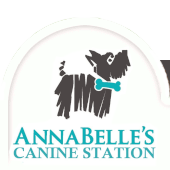By: Dawn Archer Pizzoferrato, ABCDT, Owner of Arrow Dog Training
 So what is this thing called “shaping”? Some in the dog training world use the term “shaping” to describe any training that increases a response in small increments, even though they may get the response by luring, force, verbal instruction, environmental manipulation, or other external pressure. The correct term for these non-spontaneous training methods would be “successive approximation.” Many animal trainers use successive approximation, gradually raising the height of jumps, the distance of a race, and the heaviness of weights, all to improve performance. The terms “free shaping” and “cold shaping” are used to identify true shaping from “successive approximation” when the dog’s spontaneous behavior is the key factor in the development of the behavior.
So what is this thing called “shaping”? Some in the dog training world use the term “shaping” to describe any training that increases a response in small increments, even though they may get the response by luring, force, verbal instruction, environmental manipulation, or other external pressure. The correct term for these non-spontaneous training methods would be “successive approximation.” Many animal trainers use successive approximation, gradually raising the height of jumps, the distance of a race, and the heaviness of weights, all to improve performance. The terms “free shaping” and “cold shaping” are used to identify true shaping from “successive approximation” when the dog’s spontaneous behavior is the key factor in the development of the behavior.
True shaping simply means breaking down a behavior into small increments, and reinforcing the dog’s voluntary (not lured or pressured in any way) incremental step until you’ve reached the full behavior. Shaping allows you to create behavior from scratch without physical control or corrections, but rather by drawing on your animal’s natural ability to learn.
Some trainers, like me, believe that shaping is the ultimate approach to operant training (use of consequences to modify the occurrence and form of behavior). Others incorporate shaping as a valuable part of a multi-faceted training program. Wherever you find yourself of the subject, I’m sure you’ll find that shaping is a Zen-like experience – it takes lots of patience and close observation and it involves breaking down a behavior into small components rather than lumping (reinforcing large chunks of behavior). In contrast to lumping, with shaping, the breakdown of behavior or “splitting” means looking for the tiniest piece of movement, clicking and reinforcing that small movement, and building towards the final behavior. Splitting and reinforcing voluntary behavior is the foundation of shaping complex behaviors.
 And why should you learn to “shape” and start using this technique with your dog?
And why should you learn to “shape” and start using this technique with your dog?
1) Free shaping is great for encouraging a dog who is shy, anxious or fearful to offer behaviors, because he can’t be wrong. This works particularly well with shelter or rescue dogs who find their lives anything but consistent. Anything he does that even remotely relates to the exercise gets clicked and treated. Once the dog is easily offering random behaviors, then you can, if you choose, switch to shaping a goal behavior.
2) It’s fast!! When you combine shaping with a clicker, you can develop complex behaviors within a few minutes.
3) It’s fun!! Dogs that are used to the doldrums of practicing basic obedience over and over will find this work exciting and enriching…as will their handlers. Remember, when clicker training, it’s not only about you trying to get behaviors out of your dog, but your dog is also trying to get “clicks” out of you. You’ll find this especially true when “shaping” behaviors with your dog. Your dog will start working (and thinking) hard to discover how to make you click.
Beware, one small warning … once you start shaping, you may become addicted and obsessed (I’m sure your dog will!) and unable to turn back to traditional training work. So, join me for my Doggie Do Good Beginner Obedience clicker class and you’ll be ready soon for Doggie Do Good Clicker II: Beyond Basic Obedience!
 Dawn is an Animal Behavior College Certified Dog Trainer, an experienced Nose Work Instructor, an AKC Canine Good Citizen evaluator, and the owner of Arrow Dog Training. Dawn is AnnaBelle’s resident clicker training specialist and she can help you Get Your Dog on Target! Dawn uses scientifically proven “clicker training” and “free shaping” to teach your dog all the basics plus other fun, useful behaviors. She uses operant conditioning and positive reinforcement, without correction, to help you and your dog build a bond of trust and respect.
Dawn is an Animal Behavior College Certified Dog Trainer, an experienced Nose Work Instructor, an AKC Canine Good Citizen evaluator, and the owner of Arrow Dog Training. Dawn is AnnaBelle’s resident clicker training specialist and she can help you Get Your Dog on Target! Dawn uses scientifically proven “clicker training” and “free shaping” to teach your dog all the basics plus other fun, useful behaviors. She uses operant conditioning and positive reinforcement, without correction, to help you and your dog build a bond of trust and respect.
In addition to presenting Doggie Do Good clicker classes, Dawn also offers Nose Work classes, TDI® (Therapy Dog International) classes and in-home private training. Dawn’s group classes are taught at AnnaBelle’s on Tuesday and Wednesday evenings. Click here to see her complete class schedule!
Tags: ABCDT, ANWI, clicker training, Dawn Archer Pizzoferrato, Dawn Pizzoferrato, free shaping, operant conditioning, shaping, Training










